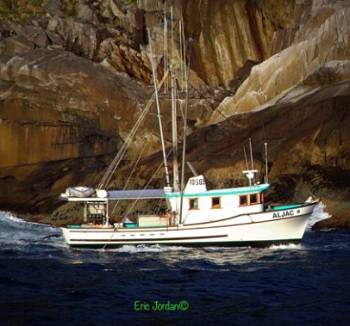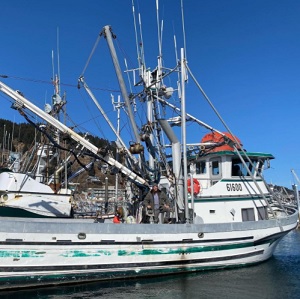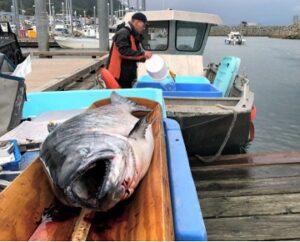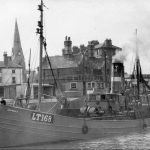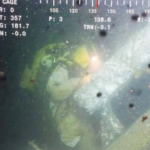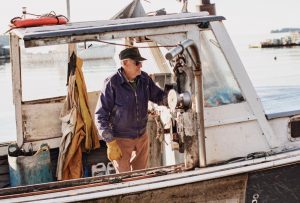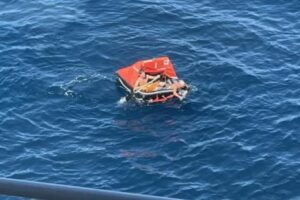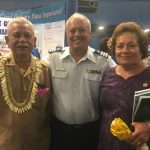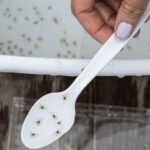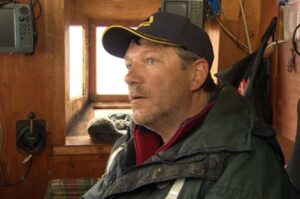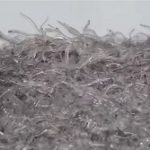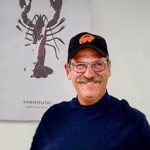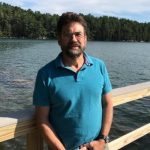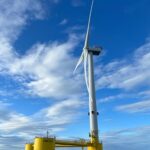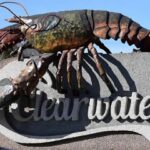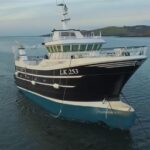Tag Archives: Alaska
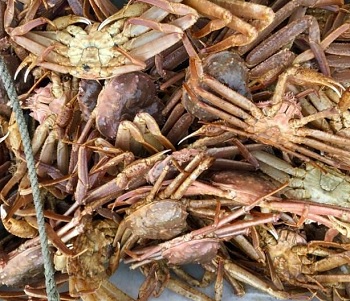
Southeast Alaska’s upcoming tanner crab fishery could be the best in decades
The upcoming tanner crab fishery in Southeast Alaska is looking very promising. The fishery starts on Feb. 11, and the harvest and price could be historic. State crab managers haven’t seen this kind of encouraging preview for Southeast’s tanner fishery for a few decades. The Alaska Department of Fish and Game has tracked the tanner population through annual surveys since the late 1990s. “What we’re seeing is kind of historically high levels,” said Joe Stratman. He says the numbers look like they did when the surveys first started. It’s not only the harvest that looks good but also the price. >click to read< 17:08
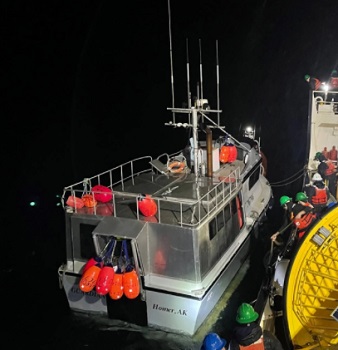
Dry Spruce Bay, Alaska: Coast Guard saves unmanned, adrift fishing vessel from running aground
Coast Guard Cutter Fir’s crew saved an unmanned, adrift fishing vessel less than one mile from running aground in Dry Spruce Bay, Alaska, Jan. 23, 2022. Fir’s crew launched a small boat and established a tow with fishing vessel Guardian less than 100 yards from shore. Fir anchored and the small boat crew maneuvered Guardian alongside the buoy deck where it was inspected for damages. photos, >click to read< 15:11
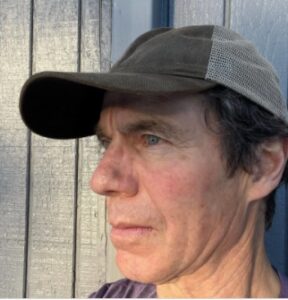
HB 52 would hurt commercial fishing and community
Rep. Vance’s Bill HB 52 is irresponsible, anti-commercial fishing, anti-community and presented with false and misleading statements. HB 52 is about removing approximately 123 acres of land from Kachemak Bay State Park that the Tutka Bay Lagoon Hatchery sits on. And basically, handing the land over to the contractor of 30 years, Cook Inlet Aquaculture Association (CIAA). Rep. Vance is charging ahead with HB 52 without basic financial information from CIAA, no business plan, profit and loss statement — nothing but a wink and nod. >click to read< By Alan Parks 09:40
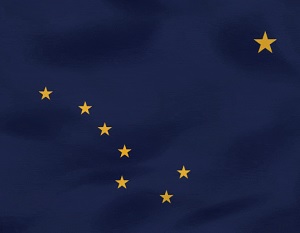
Commerce Determinations Clear the Way for Alaska Fisheries to Receive Relief Funds
U.S. Senators Lisa Murkowski and Dan Sullivan, and Congressman Don Young, all R-Alaska, today welcomed determinations from the Department of Commerce that fishery disasters have occurred in numerous Alaska fisheries, allowing Alaska fishermen to receive critical relief funding from the National Oceanic and Atmospheric Administration (NOAA). The funding can be distributed to fishermen and their crews, seafood processors, and research initiatives in the impacted regions. Secretary of Commerce Gina Raimondo today issued determinations that fisheries disasters occurred in fourteen different fisheries->click to read< 09:30
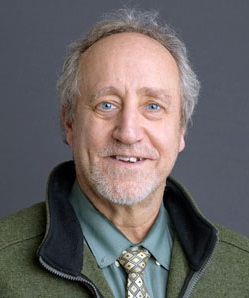
Special interest hit piece unfairly targets Southeast fisheries
I was disappointed by what I consider to be a targeted attack on Southeast Alaska salmon fisheries. A report on interceptions of British Columbia salmon in Southeast Alaska salmon fisheries was publicly released on Tuesday by Canadian environmental groups. Many Pacific salmon stocks are highly migratory and often travel across state and international borders. Several stocks migrate into Alaska’s waters to take advantage of the rich marine environment in coastal Southeast Alaska and the Gulf of Alaska where they feed and grow before starting their journey back to their natal streams to spawn. Our quality habitat allows these salmon to thrive and return healthy to their natal streams to renew their life cycle. >click to read< by Doug Vincent-Lang 13:41
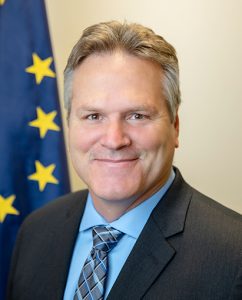
Dunleavy’s super-special election year bycatch task force – Bycatch is on the ballot.
Gov. Mike Dunleavy recently announced the formation of a shiny new “task force,” charged with studying the impacts of bycatch on Alaska fisheries and making recommendations to policy makers. The Alaska Department of Fish and Game has supposedly been doing exactly this for nearly half a century with its permanent voting seat on the North Pacific Fisheries Management Council, or NPFMC. >click to read< By Alexus Kwachka 17:12
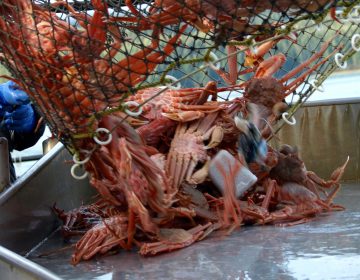
After a yearlong closure, Tanner crab season makes a comeback off Kodiak Island
Dave Kubiak spent a recent rainy Thursday stacking the deck of his boat, the Laura Lee, with crab pots in preparation for Kodiak’s Tanner crab season. According to him, the night before the season is always exciting. “We’ll leave in sufficient time to get there and to go someplace and anchor up,” he said. “And then wait for the morning and then run out and get all nervous and jittery on the opener, which is silly, but we do.” Kubiak said that he got a nickel per pound for Tanner crabs back in the 60s. Due to low supply and high demand across the country, prices for this season, which opens Jan. 15, are much higher,,, >click to read< 09:20
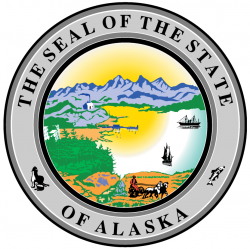
Dunleavy Announces Alaska Bycatch Review Task Force Members
Governor Mike Dunleavy released the list of eleven Alaskans who will serve on the Alaska Bycatch Review Task Force. The mission of the task force is to better understand the unintended bycatch of fish such as halibut and salmon caught in both State and federal waters. The two remaining seats on the task force will be non-voting seats filled by members of the Alaska Legislature. “The 11 Alaskans who stepped forward to serve on the Alaska Bycatch Review Task Force represent key stakeholder groups and are recognized for not only their knowledge of fisheries, but their commitment to sustaining the resource for generations of Alaskans to come.” >click to read< 07:50
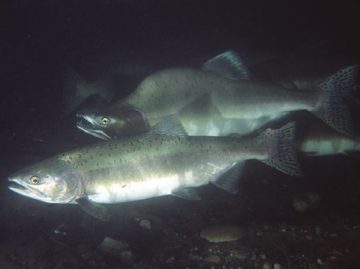
Wild pink salmon came in stronger than expected
Prince William Sound’s 2021 commercial salmon fishery proved challenging in the midst of a second year of the global novel coronavirus pandemic and increasing climate change, with harvesters delivering nearly 70 million salmon valued at an estimated $121.49 million. That added up to almost $72 million more than the value of last year’s commercial harvest of 25.5 million fish, according to preliminary state fisheries summaries. Humpy returns were the big surprise. Everyone came into the season a little bit skeptical because 2019 was such a poor year, but they perked up when they realized what they were seeing, Scannell said, of the odd year pink salmon run. >click to read< 09:58
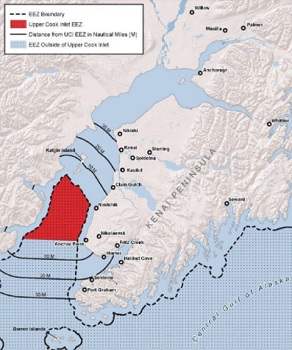
Kenai Peninsula Municipalities still working to oppose EEZ closure
Peninsula municipalities are still fighting back against the closure of federal waters in Cook Inlet to commercial salmon fishing. The city councils of both Kenai and Homer have agreed to file amicus briefs in a lawsuit brought forth by the United Cook Inlet Drift Association, which has a goal of reopening the waters before the 2022 summer fishing season. Groups across the peninsula, including the cities of Homer and Kenai as well as the Kenai Peninsula Borough, have consistently voiced their opposition to the closure of Cook Inlet’s federal waters to commercial salmon fishing. >click to read< 10:59
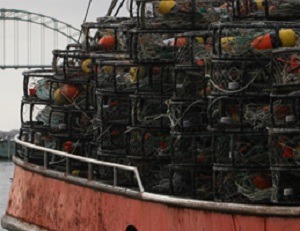
Commercial Fishing Safety on the West Coast
In 2009, NIOSH completed an in-depth study of commercial fishing fatalities in the United States for the decade spanning 2000-2009. The purpose of the study was to identify the most hazardous fisheries around the country and to describe the unique safety issues in each. For this study the US was divided into four fishing regions: Alaska, West Coast, East Coast, and the Gulf of Mexico. The results of this analysis for the West Coast region can be found in the document,,, >click to read< 13:18
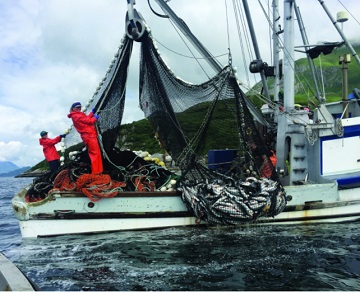
Veteran harvester speaks on the joys, challenges of fisheries
Theresa Peterson decided to take a chance getting a job at a seafood cannery in Alaska for the summer. She figured that because she hates the cold, she would never go back again. That first summer she ended up in Homer, where she fell in love with the wilderness beauty of Kachemak Bay. She decided working the slime line in a cold, noisy metal building on the Homer spit was not for her. She got work on a shrimp boast trawling in Kachemak Bay and realized she had found a beautiful wilderness where she could make a living. “Little did I know I just made a career choice,” >click to read< 10:59
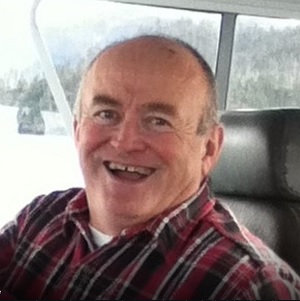
Commercial Fisherman Timothy J. Moore of Homer, Alaska, has passed away
Timothy J. Moore, age 65, of Homer, Alaska, passed peacefully from this world into the loving arms of Jesus, the Great Fisher of Men on Dec. 2, 2021. After his family, Tim enjoyed hunting and sport fishing, but commercial fishing was his passion. his first fishing experience was set netting for salmon on his Uncle Pat McElroy’s sites as a skinny 13-year-old during a summer visit to Alaska in 1967. In 1991 the acquisition of the F/V Iliamna Bay allowed him to expand his herring fisheries to include Togiak and to participate in the halibut fishery during those crazy “derby” days before IFQs. The F/V Iliamna Bay was also the beginning of his Prince William Sound salmon seining career where he made many memories fishing with the family and some amazing crew. >click to read< 15:19
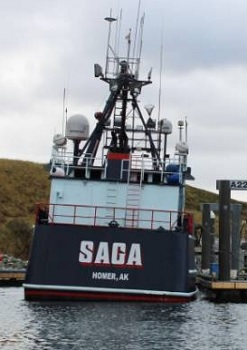
Former ‘Deadliest Catch’ captain admits to dealing heroin, court documents say
An Alaska crab boat captain formerly on the reality TV show “Deadliest Catch” has admitted to dealing heroin on the Kenai Peninsula. Elliott Neese, 39, has agreed to plead guilty to one count of possession of a controlled substance with intent to distribute. That’s according to a plea agreement Neese signed and filed in federal court Monday, shortly after prosecutors charged him. >click to read< 14:49
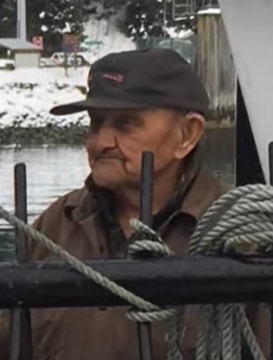
Commercial Fisherman/Army Veteran Norval Helmer Nelson, of No. Douglas, Alaska has passed away
Norval Helmer Nelson, Sr, was born April 2, 1926 in Onalaska, Washington to Arnt Hilmer Sjoning Nilsen of Bodø, Norway and Selma Elizabeth (Holmblad) Nilsen of Bergsjõ, Sweden. Ole and his brother Axel worked alongside their father to build on the beach the family’s first fishing boat-the F/V Saga–with trolling poles made from nearby spruce trees. Ole captained the F/V Saga, F/V Nova, F/V Silverspray, F/V Sparrow Castle, F/V Vermont, F/V Curlew. In 1974, Ole and his son Norvie bought the 82 foot crabber F/V Aleut Princess from Kodiak. Ole fished for crab up until he was 93 – atop the flying bridge of the F/V Christian in frigid rolling seas and snowstorms. He was never idle. Watch the video. >click to read< 21:47
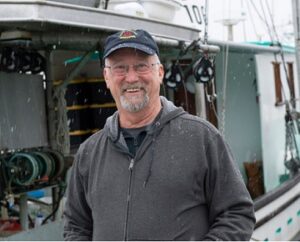
50-Year Sitka Troller ‘Friend of the Fleet’
Longtime Sitka troller James Moore has won formal recognition for his work in developing salmon hatcheries in Southeast, promoting a troll fleet logbook program, and many other activities supporting Southeast fisheries. After five decades as a salmon troller in Southeast waters, advocating for the fishery all the while, Moore has been honored by the Alaska Trollers Association as a Friend of the Fleet. Moore, skipper of the F/V Aljac, received his award from the trollers association on Oct. 11. He’s particularly proud of his efforts to increase the take of chum salmon. “If you have an opportunity to do some good then you do it… But what is the best thing I’ve done? It’s difficult to say, and it’s hard for me to take credit for it too,” >click to read< 07:29
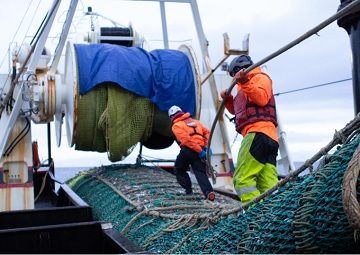
Dunleavy administration announces formation of bycatch task force
“We’ve had a reduction in or closure of the crab fisheries in the Bering Sea. The [North Pacific Fishery Management] Council is discussing how to deal with halibut bycatch, and I think there’s a lot of perception that there are bycatch issues associated with what’s happened with salmon in Western Alaska systems,” said Alaska Fish & Game Commissioner Doug Vincent-Lang. And, he says, his boss has taken notice. “I think the governor was hearing loud and clear that there was just a lot of noise around the issue of bycatch,” >click to read< 12:52
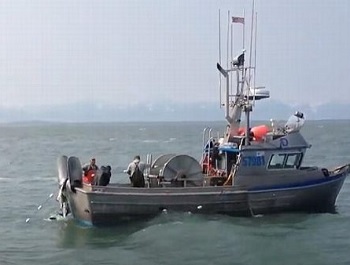
Commercial fishermen sue over Cook Inlet closure
Commercial fishermen are going to court in an attempt to keep Cook Inlet open to salmon fishing. That’s following a controversial decision by the feds to close a large swath of Upper Cook Inlet that’s long been managed by the state and is an important area for drift gillnet permit holders. The decision to close the federal Cook Inlet salmon fishery was approved by the feds last week but was first proposed last December by the North Pacific Fishery Management Council, which sets policy in Alaska’s federal waters. >click to read< 08:08
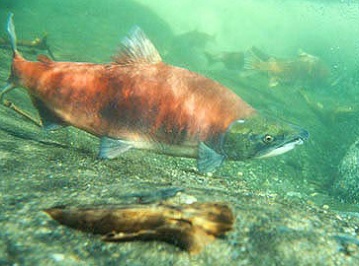
Boom-bust commercial salmon season doubles 2020 value
This summer was significantly better for commercial salmon fishermen in Alaska than 2020, though that success was far from evenly spread. Commercial salmon fishermen hauled in salmon valued at $643.9 million this season, according to the Alaska Department of Fish and Game. That’s more than double the 2020 value of $295.2 million, but still a little behind the estimated 2019 value of $657.6 million. Overall, 2021 ranks fairly well in the historical averages for numbers of salmon harvested and poundage as well as in value, according to Fish and Game data. >click to read< 16:37

Cook Inlet Federal Waters Closed to Commercial Salmon Fishing
The Biden Administration has closed the federal waters of Alaska’s Cook Inlet to commercial salmon fishing for the 2022 Cook Inlet commercial salmon fishing season. This action closes a portion of the historically used fishing area for the Cook Inlet drift gillnet salmon fishery. NOAA Fisheries, the agency responsible for the stewardship of national marine resources, published the final rule in the Federal Register November 2, and it takes effect 30 days after that. >click to read< 13:51
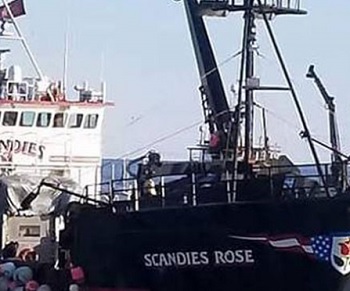
Crab boat disaster survivor dies in Alaska motorcycle accident
One of the two men who survived the deadly sinking of a crab boat in the Gulf of Alaska in 2019 has died in a motorcycle accident in Alaska, local media reported. Anchorage police on Sunday said they responded to the scene of a motorcycle accident in which it appeared the driver had lost control in a roundabout. They later identified the driver as 36-year-old Jon Lawler. >click to read< and >click here< 08:10

Puppy found alive on beach after fishing boat capsizes off Sitkalidak Island
The fishing vessel F/V Laura, a 93-foot trawler based out of Kodiak, capsized Monday morning after striking rocks near Sitkalidak Island. The four-person crew safely boarded a life raft. But their puppy, Grace, an eight-month-old, 80-pound lab mix, jumped into the freezing water and was presumed lost. The next day, another Coast Guard helicopter crew searched the area for evidence of a fuel spill from the F/V Laura, but they still held a shred of hope that Grace might still be alive. And there she was, on a nearby beach. >click to read< 13:36
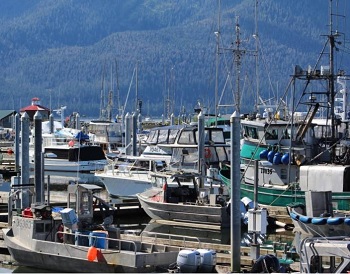
Southeast Alaska commercial salmon harvest 4 times higher than last year
Commercial fishermen in Southeast harvested 58 million salmon across the five species this year: almost 7 million chum salmon; 48 million pinks; 1.5 million coho; 1.1 million sockeye and 216,000 king salmon. That’s a marked improvement in harvest for every species. Even the embattled Southeast king salmon had a commercial harvest increase of more than 16,000 fish. In total, commercial salmon fishermen in the region caught and sold 44 million more salmon than last year. Even taking into account the odd-year pink salmon peaks, this year’s pink salmon harvest was more than double 2019’s Southeast Alaska pink salmon catch. >click to read< 19:10
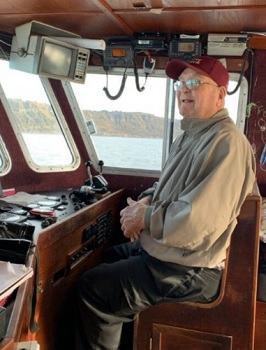
Commercial Fisherman Leroy “Roy” Wilbur Cabana has passed away in Homer, Alaska,
Leroy “Roy” Wilbur Cabana passed away peacefully at his home in Homer, Alaska, surrounded by his family on Oct. 22, 2021, at 10:22 p.m. Even in his final moments he was still full of his quick wit and banter. Some of his final words were “turn it loose,” which was a tribute to his life as a commercial fisherman. Through his employment as a longshoreman, bus driver, body shop co-owner, professional hunter/trapper, or his later careers of a boat builder, catcher/processor, vessel owner, crabber and commercial fisherman, the legacy of his life is the fishing enterprise that he and his wife started for his children and grandchildren and future upcoming great grandchildren. >click to read< 21:20
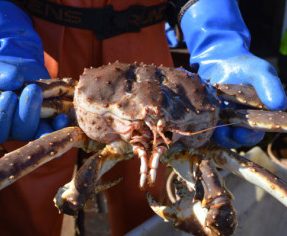
NPFMC wrestles with crab crisis – Disagreement in industry on expanding red king crab savings area
Commercial crab crews normally embarked on the Bristol Bay red king crab fishery are on the docks this October, with their fishery closed for lack of sufficient stocks, while federal fishery managers ponder how to restore the abundance required for the harvest to resume in coming seasons. During its October meeting, held virtually because of the ongoing pandemic, the North Pacific Fishery Management Council voted to request an analysis on likely impacts of expanding the red king crab savings area through emergency rule to shift the northern boundary from,,, >click to read< 08:15
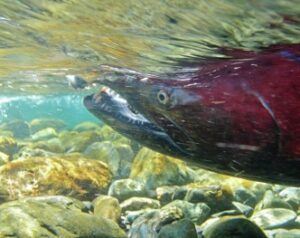
Trawler bycatch debate heats up after dismal 2021 returns
Chinook salmon returns were dismal virtually everywhere in Alaska this year, from Southeast to the Bering Sea, with few exceptions. That follows a trend, as abundance has declined over roughly the last decade. The North Pacific Fishery Management Council is debating changes in its meeting this month. Trawlers, which use weighted nets to drag either along the bottom or in midwater, are permitted a certain amount of bycatch as they fish for their target species, the largest of which is pollock. Bycatch is always a heated issue, but it is especially so now. >click to read< 07:10
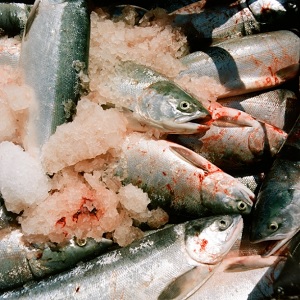
One Alaska Bay Is Booming With Salmon, For Now
Bristol Bay’s sockeye harvest has long made up about half of the global catch of this species, in a seasonal blitz as short as it is enormous: The fishery lasts a mere six weeks. Each summer, 15,000 seafood processors, boat-based fishermen, and setnetters, including families such as the Bandles, gather here to support an industry worth more than $2 billion in 2019. Some fishermen will net enough cash to live on until the fish come back the next year. And this year, Bristol Bay outdid itself,,, But such riches are localized. Outside of Bristol Bay, salmon fisheries are failing, including those on British Columbia’s famed Fraser River, on Alaska’s Chignik and Copper Rivers, and in Cook Inlet. Five hundred miles north of Bristol Bay, Yukon River salmon runs have totally collapsed. >click to read< 12:35 ADFG: Bristol Bay sockeye runs set all-time record – It’s official: Bristol Bay’s 2021 commercial salmon season was the largest on record. >click to read<






